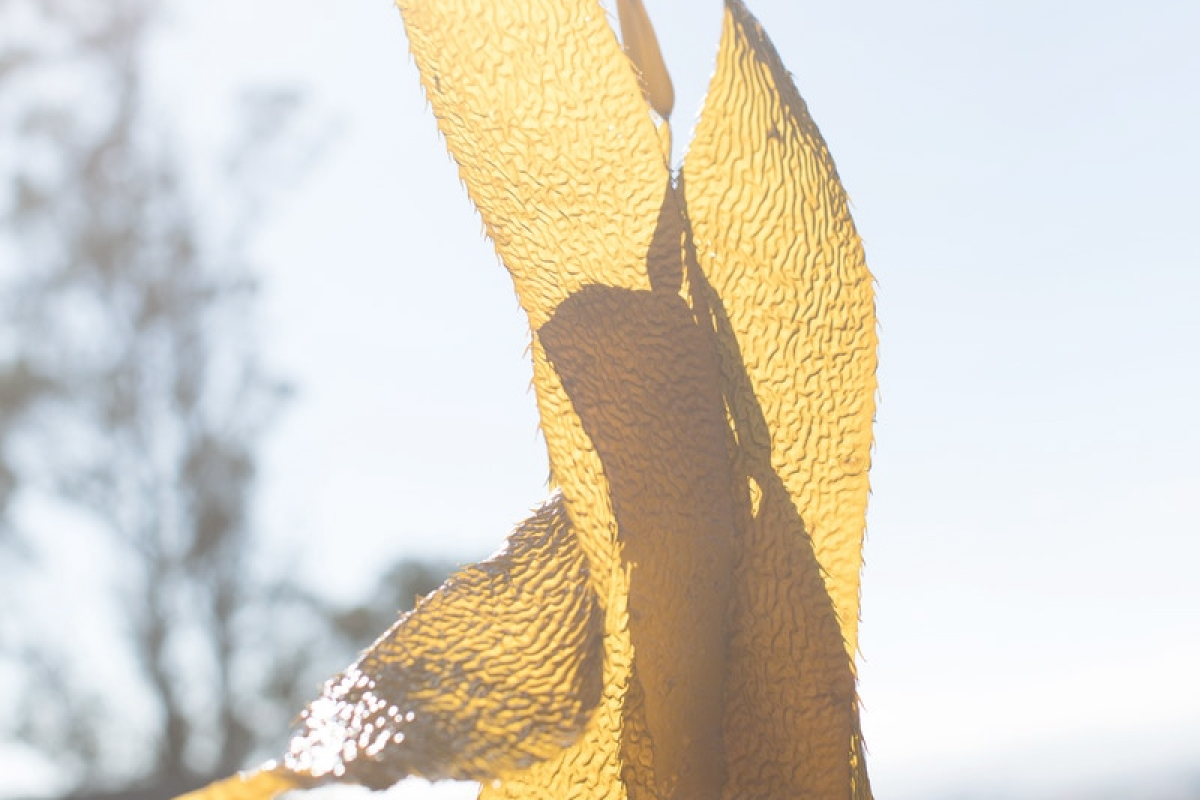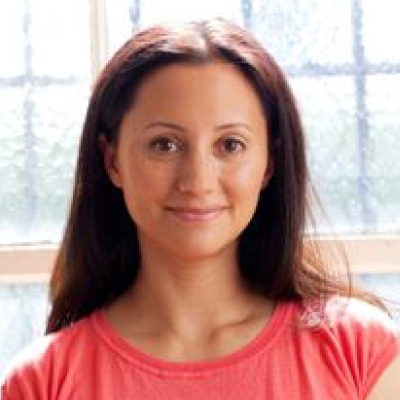Dara Kennedy had always been drawn to the beauty industry, but felt that the shopping experience was often frustrating for consumer’s, and there were far too many red flags when it came to the safety and efficacy behind ingredients and production methods. She founded Ayla as a place for people to go for carefully curated, healthy beauty products from various brands around the world, and has now launched her first product under Ayla’s label, the Sea Soak. The Sea Soak is inspired by a customary therapeutic seaweed bath from Ireland. Ayla’s version is a beautiful ritual that includes steeping an organic cotton bag of seaweed in a hot bath of saltwater. The seaweed does wonders for our bodies—similar to what it does naturally in the ocean: filtering out pollutants, ridding excess acidity and CO2, and supplying nutrients. While soaking in the tub, you may squeeze that cotton bag of seaweed for its anti-inflammatory gel, a potent hydrating serum for skin, hair and scalp. The Sea Soak salt from the waters off Big Sur—same salt used by top restaurants—has been filtered nine times before being greenhouse-evaporated. Their food-grade seaweed is also fine-dining-approved as their forager supplies chefs like Daniel Boulud and David Chang. And bringing the whole process full-circle, your post-bath seaweed pouch can be used for composting as an exceptional fertilizer and gracious way to give back to the earth. I highly recommend taking some mermaid time to delve into this special experience for body, mind and soul.
—Charlotte DeFazio
Tell us about Ayla and how the journey began.
The world of beauty captured my imagination ever since I tried to develop my first blockbuster skincare product when I was in the second grade: morning dew packaged in jam jars, which when harvested on May 1, would give women a beautiful complexion for life (according to New England colonial legend). Much to my chagrin, my harvesting methods were primitive even by colonial standards, and it didn’t work out.
I eventually got into the industry as a marketer and product developer for brands ranging from Elizabeth Arden to Living Proof, but the entrepreneurial voice that had been inside my head in those second grade days grew louder over the years. I decided to step outside of the beauty industry to experience that world as a regular shopper to figure out what I could contribute. I found that, while there were lots of great products out there with an objective to make us feel beautiful, the process of buying them didn’t really do that. Far too often, it caused feelings of frustration or inadequacy or that awful sense of being swindled when you walk out of a store with a bundle of products you don’t need. Shouldn’t that shopping process make us feel great, too? More importantly, shouldn’t those products actually work without potentially harming us?
I wanted to share my passion with others in a way that was fact-based and results-oriented without fear-mongering. Ayla offers clean beauty that works, paired with personalized guidance that’s unparalleled. We sell carefully curated products from around the world and recently, we began to add our own products under the Ayla label. The desire to see and celebrate the light within each individual with healthy, thoughtfully-made products is the thread that runs through everything we do at Ayla. It is an honor and a delight to be able to do that every day.
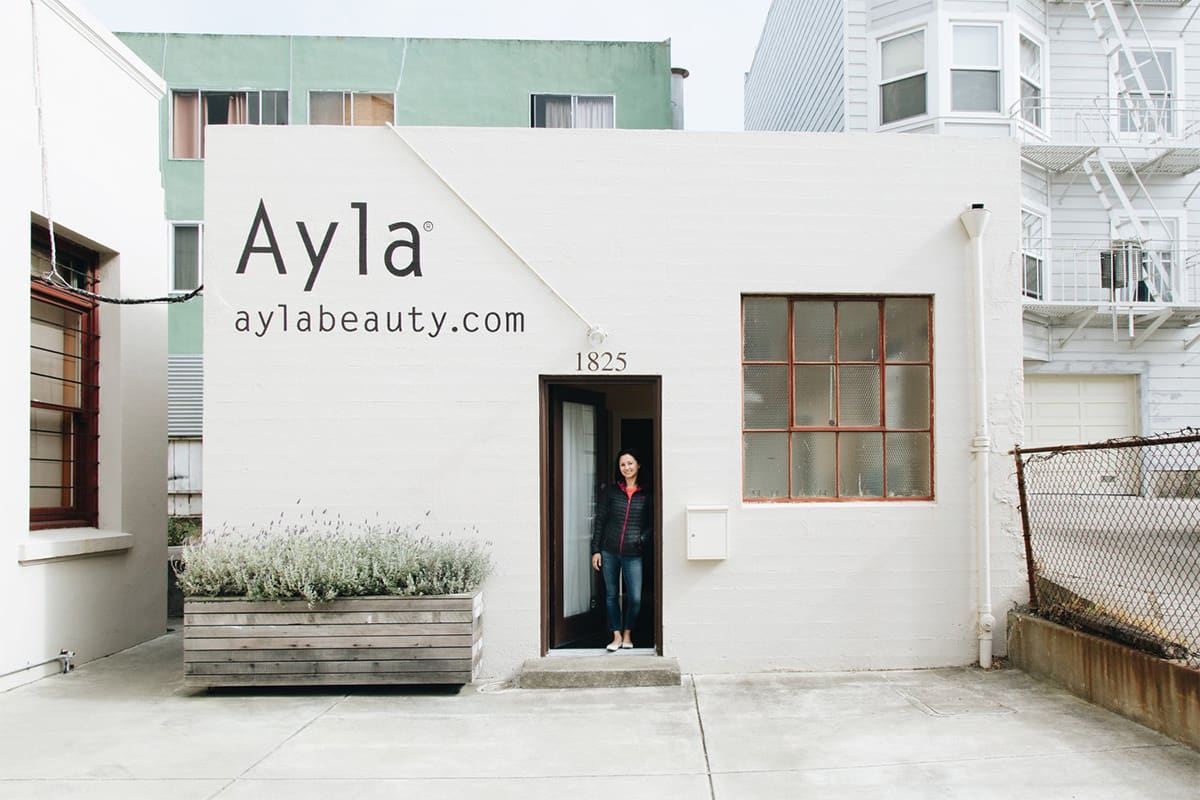
How do you vet the brands you have curated? What is the criteria?
Whether you call it clean, nontoxic, green or healthy, this part of the beauty world has been our sandbox since the day we launched in 2011. It is endlessly fascinating because it’s in a state of constant change. We’re always learning new things about the safety and efficacy of ingredients, production methods and packaging, both for people and for the planet.
This is why we don’t put a list of “never” ingredients at front and center. We have a basic list on our blog of ingredients we avoid for those who want to see it, but our complete list would include lengthy explanations and notes on exceptions. It would have to take into consideration how the product is made and by whom, and the tiny things that we obsess over would make us tweak it all the time. Our approach to product vetting is probably more rigorous than most, and we’ve been committed to it for nine years, but we believe in focusing first on what makes the efficacious products we hand-pick for our shelves so extraordinary—discussing what’s in them and what they’ll do for you rather than on what’s not in them and what they won’t do for you.
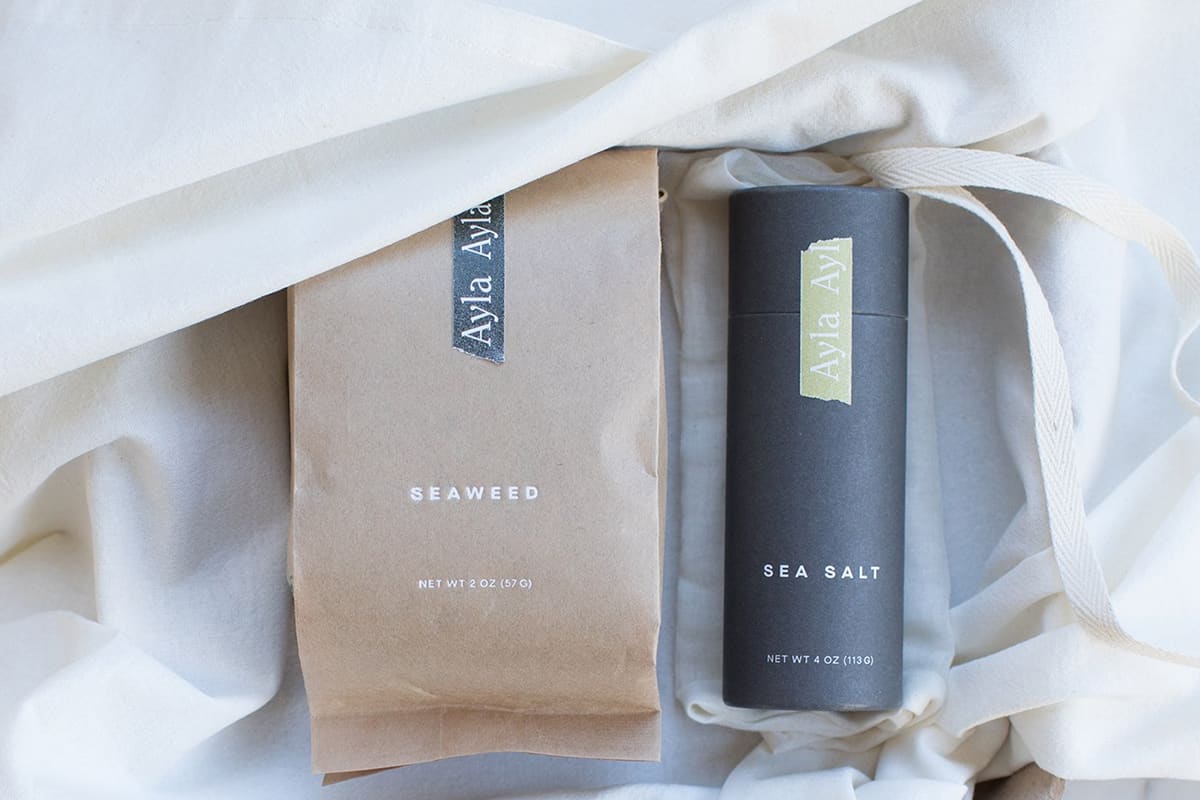
What inspired your first Ayla-branded product, the Sea Soak?
The Irish seaweed bath has been a therapeutic ritual for generations—a panacea for ailments as varied as rheumatism, water weight, sluggish circulation and cellulite. I became devoted to these baths during the last couple of wildfire seasons in California when I craved something to give my body a reset after days of breathing in smoke-filled air. I found that seaweed baths provided the single most purifying experience I could get at home; a detoxifying treatment that felt much more multi-dimensional and deeply restorative than the Epsom salt baths I’d tried for the same purpose.
Seaweed’s natural function is to filter out pollutants in the ocean, sweeping out excess acidity and CO2 in the water while supplying nutrients to sea life. In a hot bath, salt water helps seaweed coax out what your body needs to let go of and replaces it with essential minerals.
I’ve always wanted our company to be the type of business that prompts people to think deeply and differently. I’d been looking for a way to create a larger link between the products we sell, where they come from, and what that means for us and the planet. The Sea Soak has been a great way to witness how powerful just two ingredients from nature can be when they’re as pure and potent as possible. Our kelp is as fresh as it comes: it’s sun-dried in the California desert after being chopped into pieces that allow its detoxifying alginate gel to release in a hot bath. Our salt, which is greenhouse-evaporated from the pristine waters off Big Sur after being filtered nine times, is so prized for its incomparable saltiness and purity that it’s the salt of choice at restaurants like Sierra Mar at the Post Ranch Inn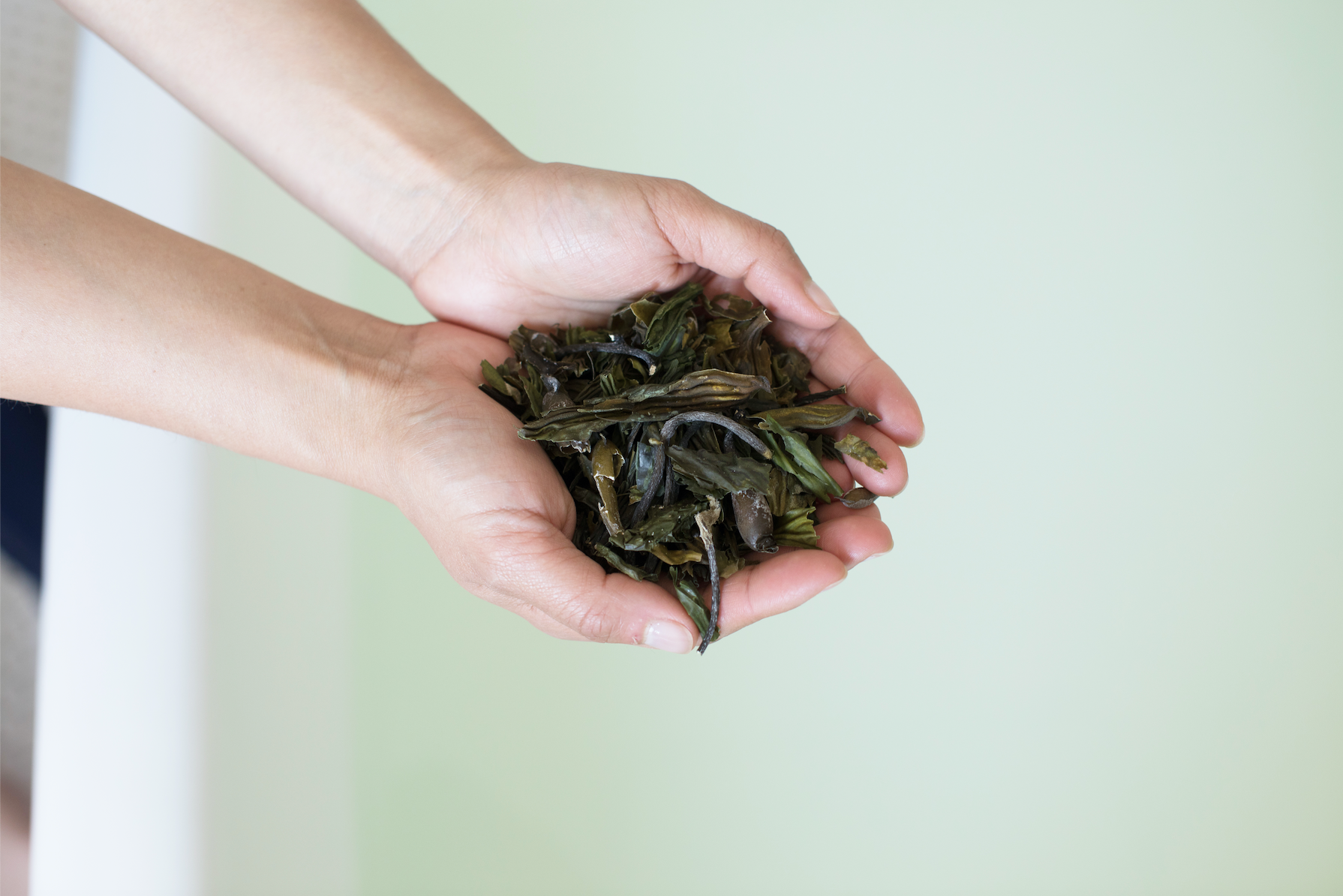
How does the bathing ritual work?
First, you dissolve the salt in hot bathwater to create a saltwater base that mimics the sea. Then pour your sun-dried kelp into an organic, biodegradable cotton pouch and let that steep in the water like a tea. In hot saltwater, the kelp releases circulation-stimulating iodine, detoxifying chlorophyll and anti-inflammatory fucoidan to give you an intense yet relaxing remineralizing experience.
The hot saltwater will kick off your natural sweating process on its own, and as the seaweed steeps, the saltwater will extract specific nutrients from the kelp that are known to kick the body’s detoxification processes into gear. In some individuals (for example, those with a sluggish thyroid or the many of us whose bodies are a bit low in iodine), the high iodine content of the bath can be a particularly important part of this process. And the anti-inflammatory gel you’ll squeeze out of the organic cotton gauze bag is like a freshly-made, incredibly potent hydrating serum that’s not only a boon for skin conditions like eczema and acne, but also positively marvelous for dry hair and scalps.
When you’re done, the seaweed pouch can be used to make compost tea (which your houseplants will love). You can compost the whole thing or empty the pouch and till the seaweed directly into your soil. It is fantastic fertilizer and a beautiful way to bring the ritual full circle, giving back to the earth. The ritual is intended to take a little work to remind you to think about where the ingredients come from, what they do for you, and what they do for the planet.
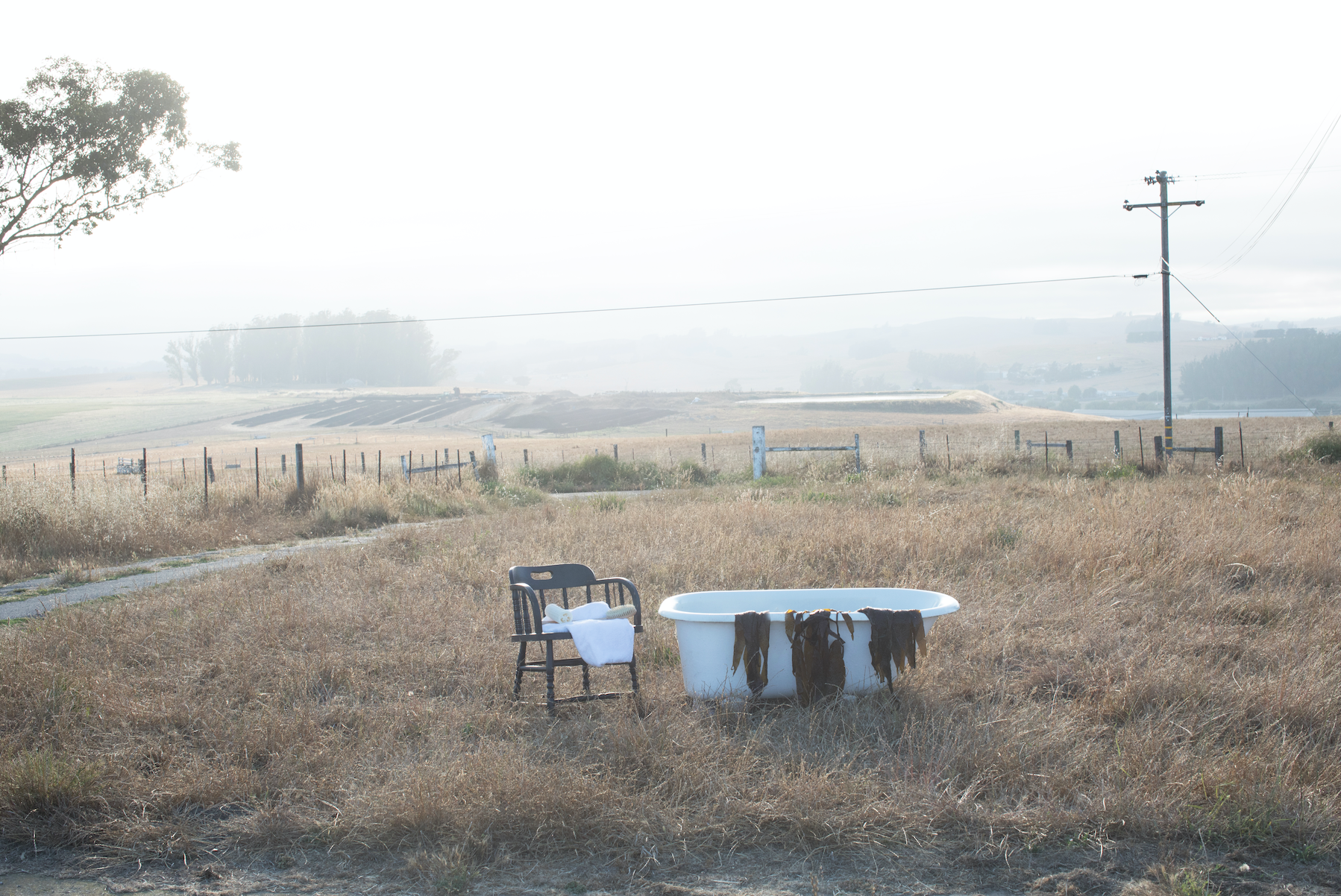
What have been some of the customer reactions/feedback?
When we tested our bath, most of our testers likened its effect to that of an infrared sauna, a deep-tissue massage, and “how I feel after the hardest workout I’ve ever done.” Since we launched it, the customer reactions have been fantastic. I’m also devoted to it myself. I take a Sea Soak every week. It makes me sweat like crazy and wonder what’s happening to my body, and when I get out of the bath, I often have to lie down for a few minutes. Then I feel amazing, almost like I’m ten years younger. It’s a healthy addiction.
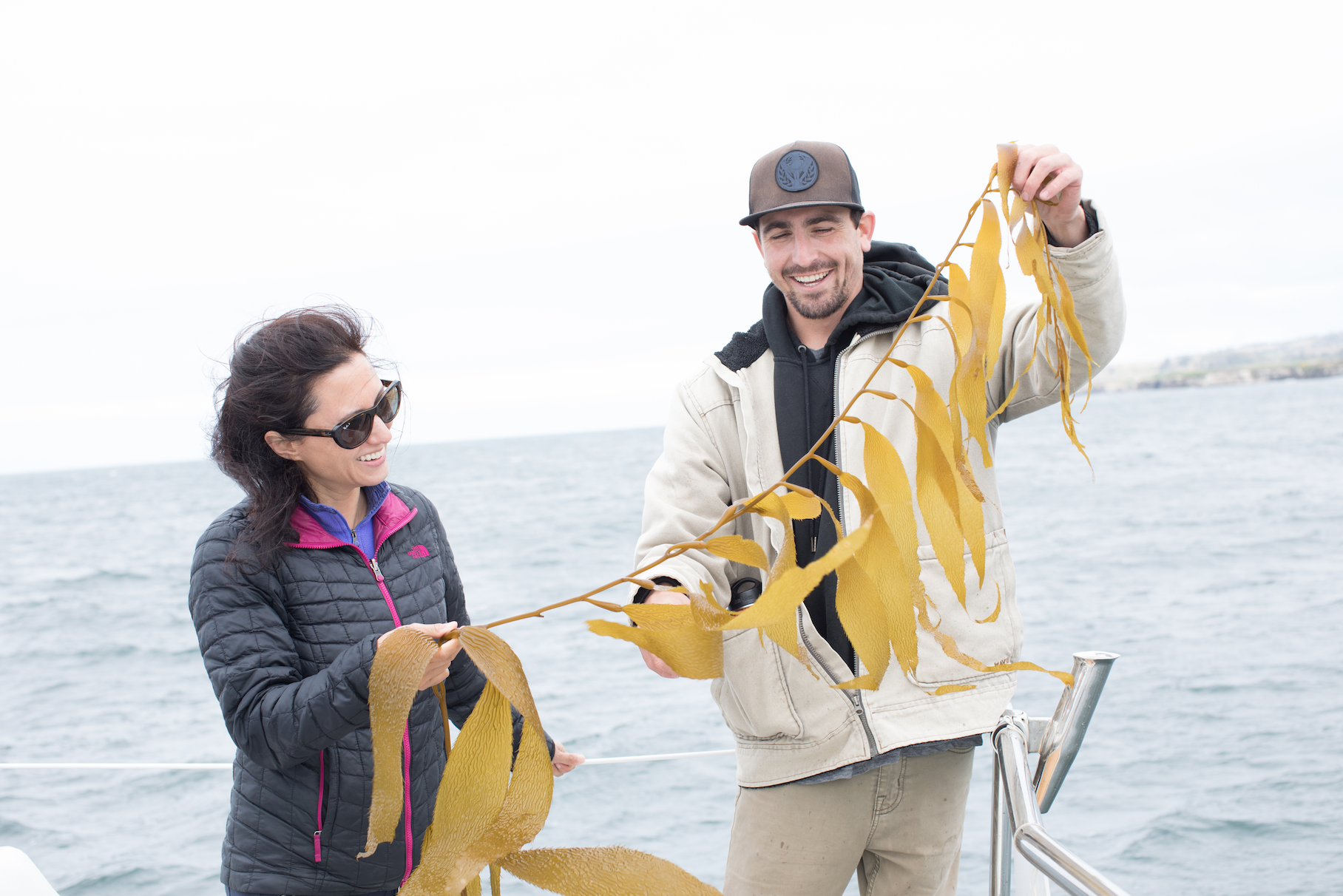
How do you find the best, most sustainable seaweed foragers?
I wanted to work with a forager who is a perfectionist about quality and who supplies not just food-grade, but fine-dining level seaweed (our forager supplies chefs like Daniel Boulud and David Chang). It was equally important to find someone who was up for a new and different challenge because this is a unique product we’re making.
Sustainability is naturally a cornerstone of our forager, Ian O’Hollaren’s work because surfing is such a big part of his life; he greatly respects and loves the ocean. He hand-harvests our wild kelp at sea, carefully avoiding Marine Protected Areas and only harvesting in areas of particular abundance. He has a license from the Department of Fish & Wildlife, which monitors kelp harvesting along the coast, and assiduously follows their sustainable harvesting guidelines. On top of that, he has consulted with two professors at the University of California Santa Cruz (UCSC) about the specific kelp beds he harvests from, and neither see a negative impact involved with the way we are harvesting. One of the professors has been watching those kelp beds for the past 30 years, so he knows them well. The amount Ian harvests for us is minute compared to what is harvested by other local companies especially abalone farms, which harvest wild kelp frequently. The amount he harvests for us grows back in about a week.
Still, our connections with the Department of Fish & Wildlife, UCSC, the Ocean Protection Council, and Reef Check ensure that we’ll be the first to know if and when the Santa Cruz kelp forests start to thin, and we’ll stop harvesting there without hesitation. Given that this is the most abundant, resilient, and fastest growing type of seaweed on the California coast, I hope that day doesn’t come because it would signal a dire situation as far as the health of the Pacific Ocean and the planet are concerned.
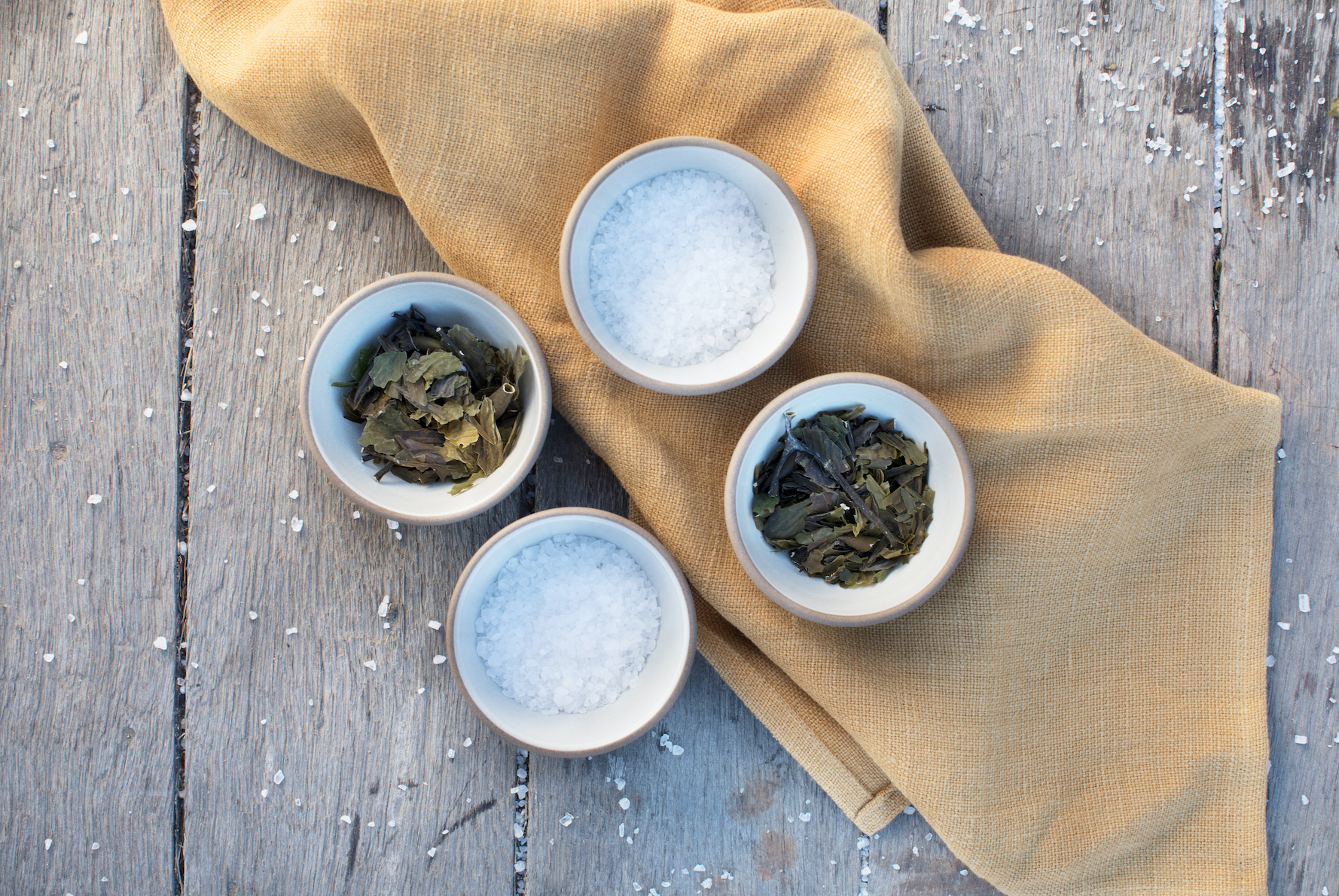
What’s the difference between giant kelp and bull kelp, and which do you use?
We use giant kelp, and there’s a big difference between giant and bull kelp.
Bull kelp is an annual plant (a life cycle lasting only one year) while giant kelp is a perennial plant (comes back for many seasons). Because of this difference, it’s crucial that bull kelp release their spores during the year to insure reproduction. Another important thing to note is that these spores are released on the fronds (leaves) of bull kelp. With giant kelp, spores are released at the base of the stipe (stem) so harvesting from the top four feet of the plant doesn’t inhibit its ability to reproduce.
In Northern California, the bull kelp forests have been depleted by sea urchins and other environmental factors, but the giant kelp forests we harvest from the Santa Cruz area are still relatively abundant and healthy, although urchins remain a threat. Both species grow rapidly, but because giant kelp lives up to 8 years, it has more success on a reproductive level to ensure its survival each year.
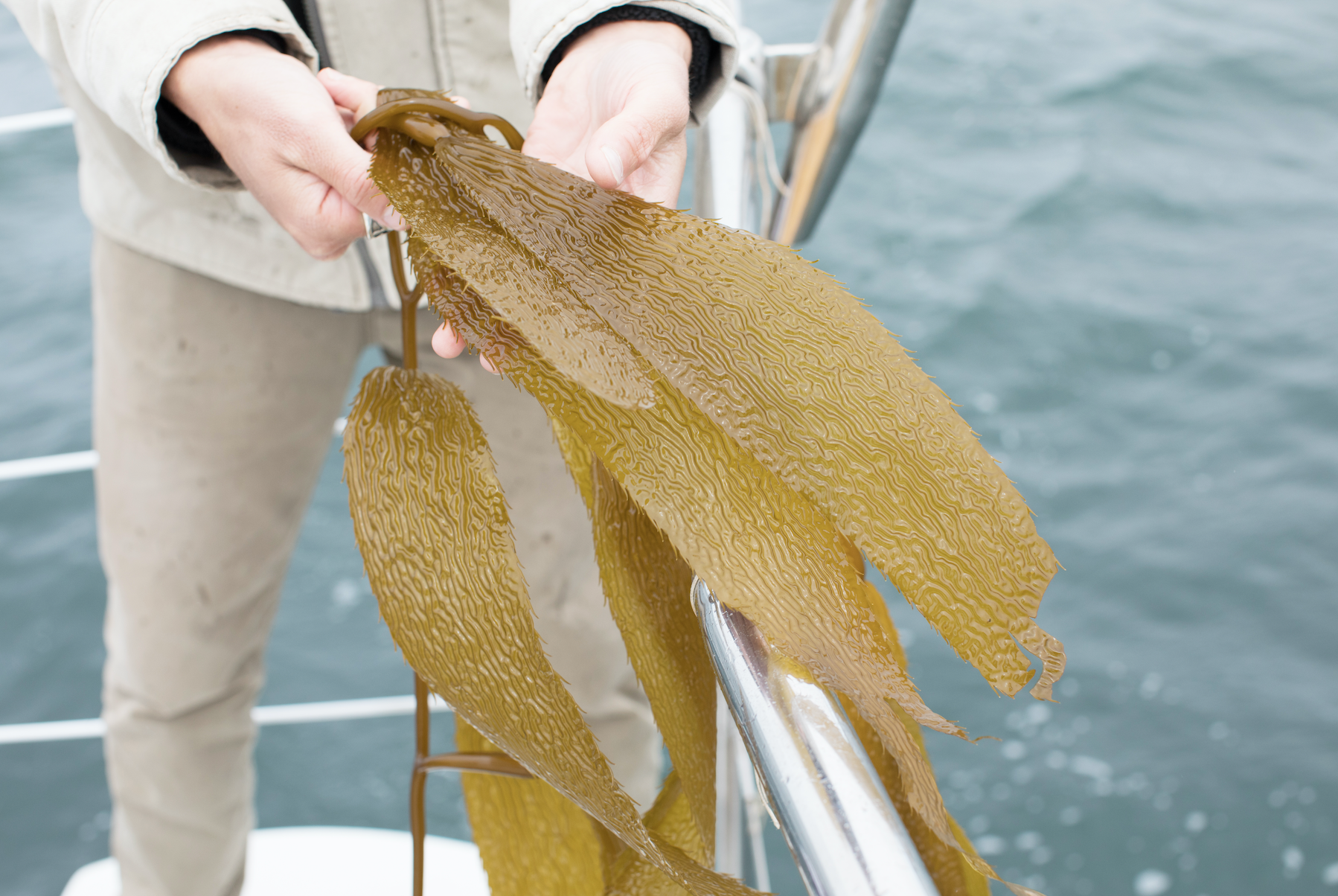
Why did you choose to partner with Reef Check?
Reef Check is an incredible “citizen science” nonprofit that educates and empowers anyone SCUBA-certified to help with marine conservation efforts. In the state of California, Reef Check was instrumental in helping the California Ocean Protection Council establish Marine Protected Areas and provides them with data on an ongoing basis to monitor the health of those important coastal ecosystems.
I spoke with the Deputy Secretary for Climate Policy at the California EPA as well as the Deputy Director of the California Ocean Protection Council to identify the best organization for us to donate to, and I was grateful for their input. Reef Check is a particularly good fit for us because they’re conducting studies that directly monitor the ongoing health of California’s kelp forests. Our partnership allows us to give back in a way that is connected to the very resources we use and also provides us with a way to stay as informed as possible about their health. And they prove that even if you’re not a scientist, you can have a measurable impact on the health of the ocean.
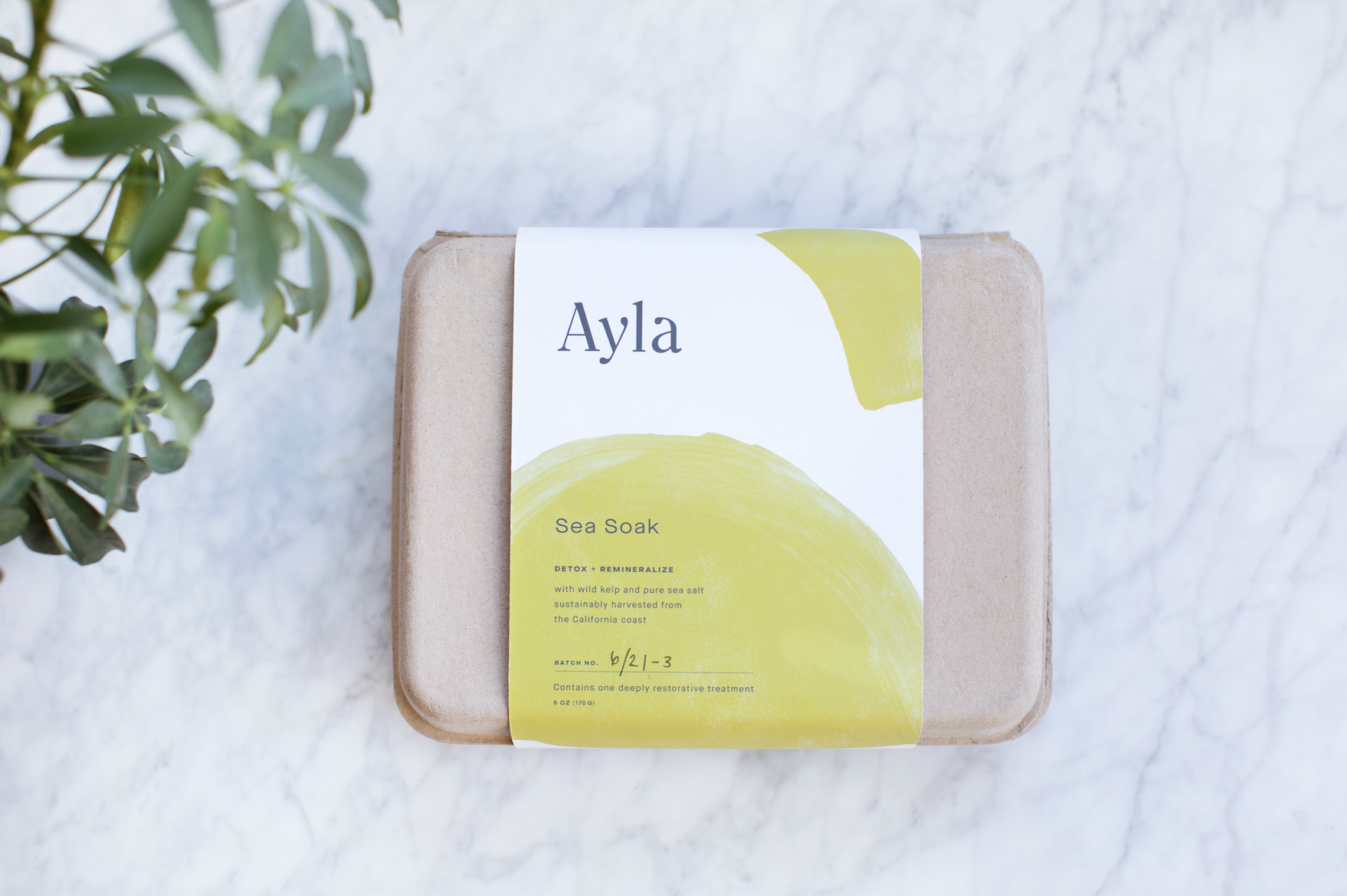
Why is seaweed so important to the ecosystem?
Climate change is an undeniable fact. One of its effects is ocean acidification, a significant amount of human-made CO2 being absorbed by the oceans. This results in a long-term change in seawater chemistry that places coastal and marine ecosystems under significant stress inhibiting the growth of coral reefs, for example, and endangering very young fish.
The key drivers behind healthier pH levels in the ocean are seaweed and sea grass. These marine plants lower the acidity of the water. As a result, kelp—especially Macrocystis pyrifera, the fast-growing variety—is currently a major plant of focus in conservation circles. While coastal waters make up a small percentage of the ocean, they host a disproportionate amount of plants required for the ocean’s food, and an even larger percentage of the fish that humans consume. Seaweed alone can’t save us from climate change, but keeping kelp forests healthy has an impact on coastal ecosystems and protecting the ocean as a whole.
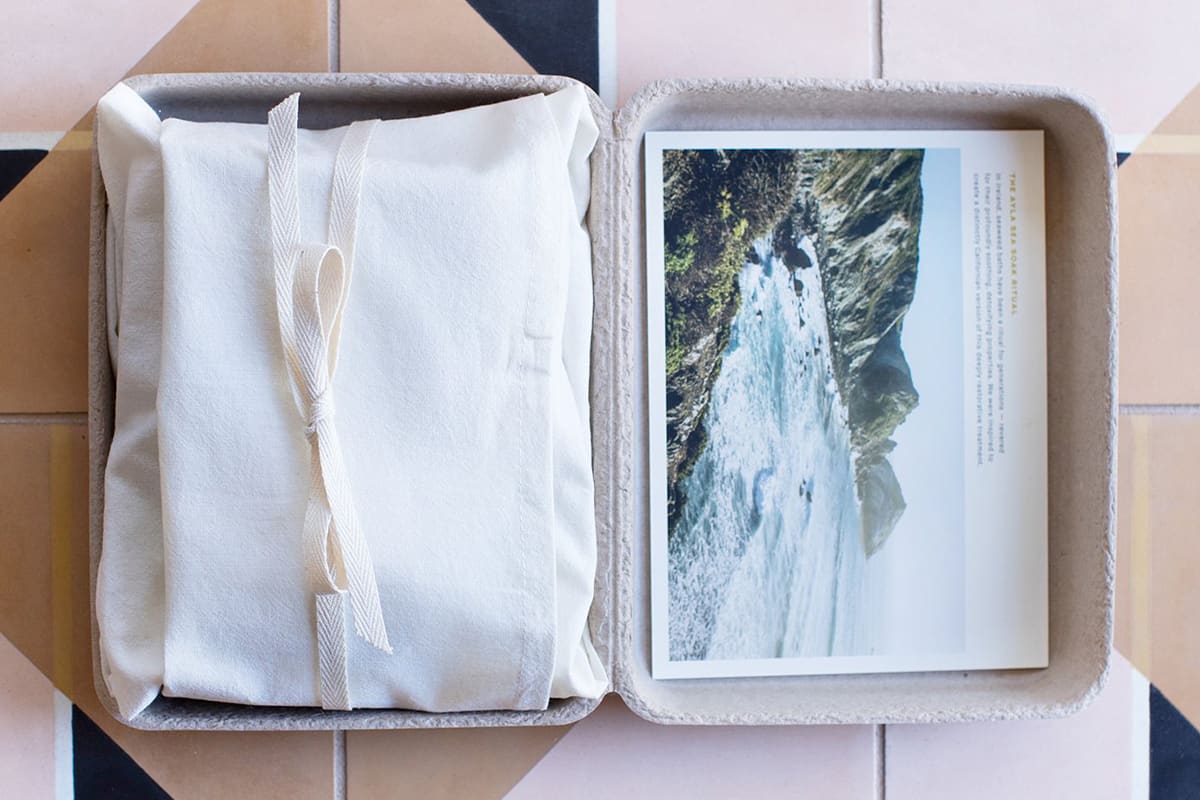
How are your products packaged?
We source, print and make as much of our packaging as possible in the Golden State, and each element of the plastic-free Sea Soak packaging is recyclable or compostable.
The biodegradable organic cotton bag is hand-stitched in San Francisco at a female-owned sewing factory that pays fair wages. Instead of using void fill, we’ve included an unbleached tea towel in the box. We suggest using that during your bath to keep your phone from getting wet when you listen to the optional Sea Soak meditation. And post-bath, it’s an excellent replacement for paper towels.
The paper components of the Sea Soak packaging can be recycled though the paper clamshell and salt cylinder have plenty of potential for reusability. To compost the kraft paper seaweed bag, you’ll just need to remove the tin tie.
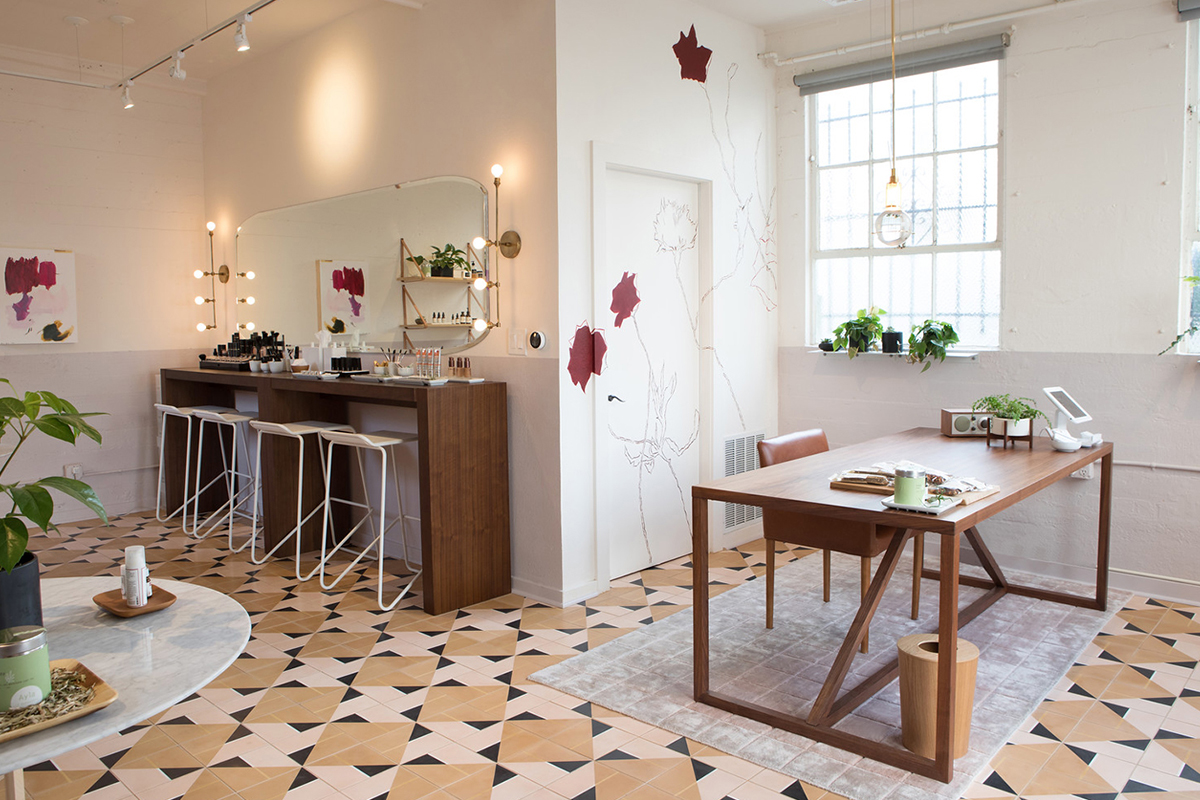
What’s on the horizon for Ayla? More products?
Ayla wasn’t originally intended to be a product business, but I’ve been thrilled at the response we’ve gotten to the Sea Soak and it has shown me that we can make products that tell their own unique story, and supportively stand alongside the other brands we sell.
I think our story will always be about efficacy on a real, deep level, but also about connection. Our Sea Soak is not only a deeply restorative treatment, but a love letter to our beautiful state of California and its natural, untouched beauty. It’s a reminder to us all to protect the earth’s natural beauty, everywhere. If a product or an experience can change how you feel and how you think about yourself for the better, that’s wonderful. But if it can change how you think about the world, that’s truly remarkable. That’s what excites me.

